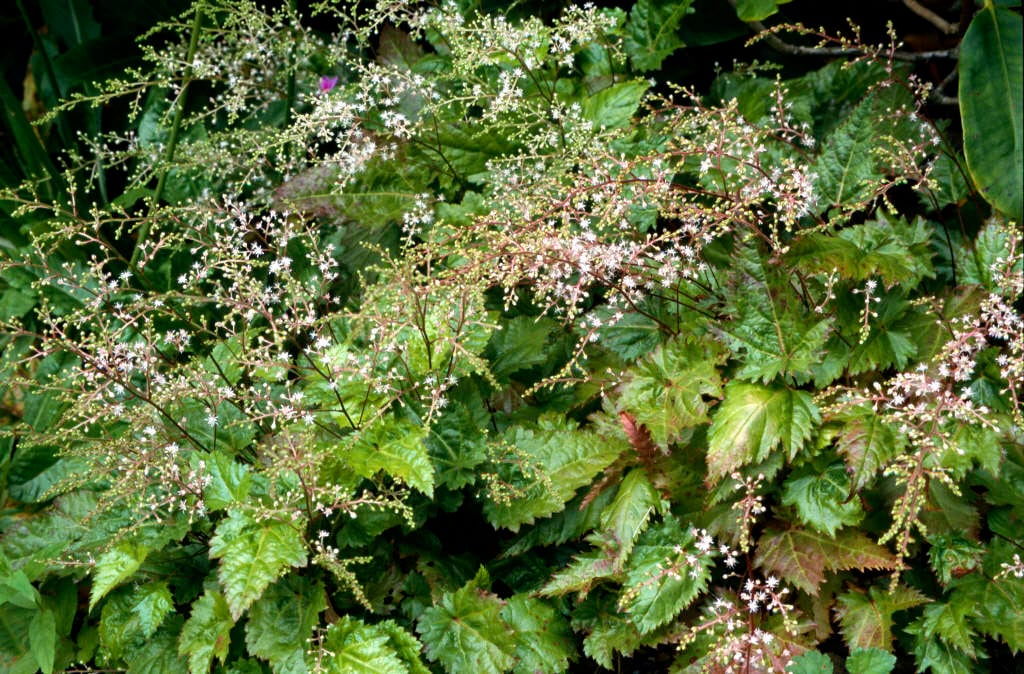Astilbe simplicifolia
entire-leaved astilbe
Compact, dwarf, clump-forming perennial about 20-30cm tall, with basal rosettes of sharply-toothed, oval mid-green leaves, and open, arching sprays of creamy-white flowers on stems to 30cm tall in mid and late summer

Buy this plant
Size
Ultimate height
0.1–0.5 metresTime to ultimate height
2–5 yearsUltimate spread
0.1–0.5 metresGrowing conditions
Moisture
Moist but well–drained, Poorly–drainedpH
Acid, Alkaline, NeutralColour & scent
| Stem | Flower | Foliage | Fruit | |
| Spring | Green | |||
|---|---|---|---|---|
| Summer | White | Green | ||
| Autumn | Green | |||
| Winter |
Position
- Partial shade
Aspect
West–facing or East–facing or North–facing
Exposure
Sheltered Hardiness
H5Botanical details
- Family
- Saxifragaceae
- Native to GB / Ireland
- No
- Foliage
- Deciduous
- Habit
- Clump forming
- Genus
Astilbe are rhizomatous herbaceous perennials with attractive, usually ternately divided leaves and erect plume-like panicles of tiny white, pink or purple flowers in summer. The old, brown flower-heads remain attractive in autumn
- Name status
Correct
- Plant range
- Japan
How to grow
Cultivation
Grow in moist but well-drained or boggy soil in dappled shade, or in indirect sun where the soil remains moisture-retentive in summer. Drought intolerant, may be damaged in hot sun. Good for waterside planting. See Astilbe cultivation
Propagation
Propagate by division in late winter or early spring, pot divisions under glass and plant out in late spring.
Suggested planting locations and garden types
- Cottage and informal garden
- City and courtyard gardens
- Flower borders and beds
Pruning
Cut back stems and foliage before new growth begins in spring
Pests
Generally pest-free but may be susceptible to vine weevil
Diseases
May be susceptible to powdery mildews
Get involved
The RHS is the UK’s gardening charity, helping people and plants to grow - nurturing a healthier, happier world, one person and one plant at a time.